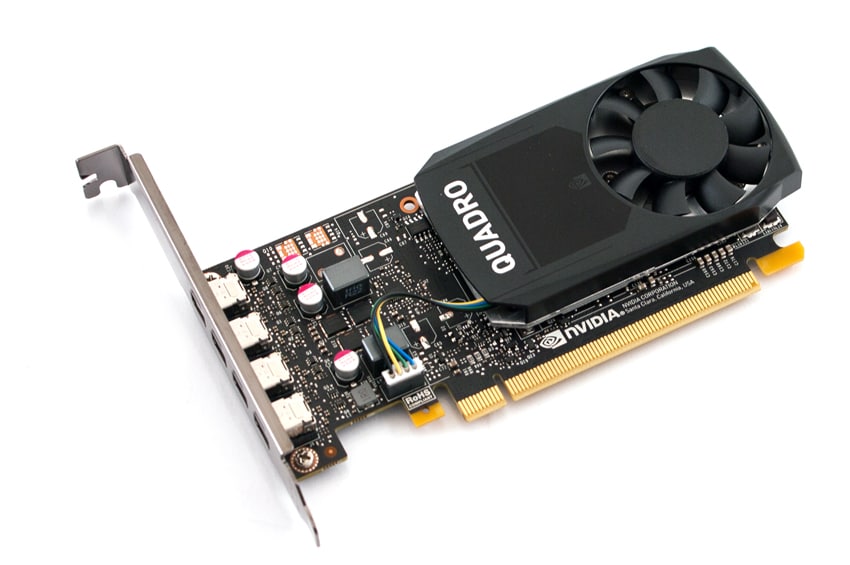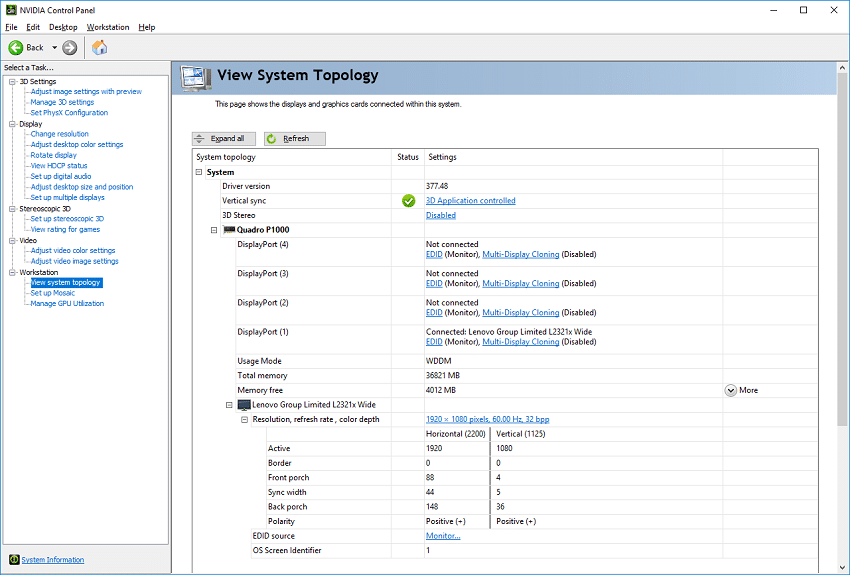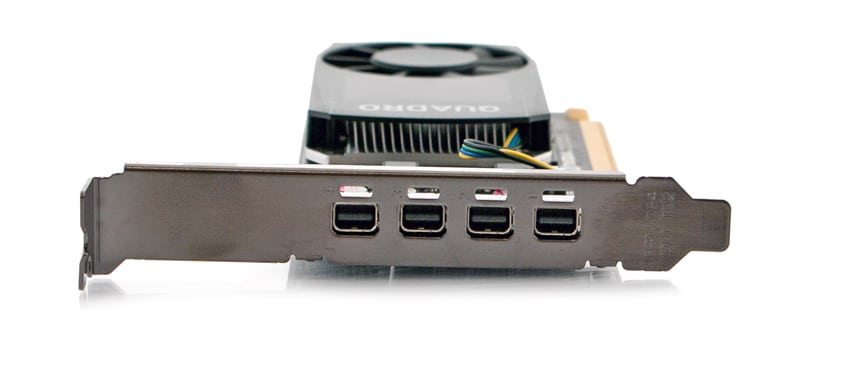
The NVIDIA P1000 is small form-factor professional graphics card from newly released Quadro cards featuring the company’s Pascal GPU architecture. We previously reviewed the mid-range P4000 model from NVIDIA’s new Quadro line and found it to be an impressive performer for its price point. The P1000 is a entry-level card from this family and is designed for those looking for an even more affordable GPU solution that minimizes the workstation footprint without having to sacrifice performance. Though it certainly can’t handle demanding professional applications on the same level as the higher-class Quadro cards, the P1000 will be able to tackle most use cases.

The P1000 is equipped with a 640 CUDA core Pascal GPU, 4GB GDDR5 of onboard memory and advanced display technologies, all of which are tightly packed inside a low-profile form factor. In addition, it supports up to for four 4K displays with a native resolution of 4096×2160 (60Hz) and does not require any additional power connector, as its maximum consumption is quoted at just 47W–less than half of what the P4000 pulls out.
NVIDIA has equipped with P1000 with 4x mini-DisplayPorts and is connected via the PCIe 3.0 x16 interface. Measuring in at just 145mm in length, the P1000 also features a single-slot cooling solution.
NVIDIA Quadro P1000 Specifications
- GPU Memory: 4GB GDDR5
- Memory Interface: 128-bit
- Memory Bandwidth: Up to 82GB/s
- NVIDIA CUDA Cores: 640
- System Interface: PCI Express 3.0 x16
- Max Power Consumption: 47 W
- Thermal Solution Active
- Form Factor: 2.713” H x 5.7” L, Single Slot, Low Profile Display
- Connectors: 4x mDP 1.4
- Max Simultaneous Displays: 4 direct, 4 DP 1.4
- Multi-Stream Display Resolution:
- 4x 4096×2160 @ 60Hz
- 4x 5120×2880 @ 60Hz
- Graphics APIs: Shader Model 5.1, OpenGL 4.53, DirectX 12.04 , Vulkan 1.03
- Compute APIs: CUDA, DirectCompute, OpenCL
Performance
To test the NVIDIA Quadro P1000, we installed it in our HP Z640 desktop workstation and ran several graphics benchmarks to evaluate performance when compared to the nearest similar-class GPU in the lab, an NVIDIA M2000. Though from different classes and with different architectures, they are similarly specced: both cards have 4GB GDDR5 in GPU memory and 128-bit interface memory and leverage the PCI Express 3.0 x16 slot. Though the M2000 is quoted with up to 106GB/s in bandwidth (vs. 82GB/s), the P1000 is half the size and consumes almost have the power. To this end, we will be using a benchmark that looks at several aspects of the ArcGIS program; however, we are most interested in the average of the drawtime, average frames per second (Average FPS), and minimum frames per second (Minimum FPS).
Looking at drawtime, the P1000 measured 6.412 seconds, which was just slightly higher than the M2000 by just a few tenths of a second (6.262 seconds). In average FPS, the P1000 posted an average of 342.25 FPS while minimum FPS came in at 187.16 FPS, noticeably outperforming the M2000, which had 273.51 FPS and 160.51 FPS, respectively.
| ESRI Benchmark | |
|---|---|
| Drawtime | Average |
| NVIDIA Quadro P1000 | 00:00:06.412 |
| NVIDIA Quadro M2000 | 0:00:06.262 |
| Average FPS | Average |
| NVIDIA Quadro P1000 | 342.25 |
| NVIDIA Quadro M2000 | 273.51 |
| Minimum FPS | Average |
| NVIDIA Quadro P1000 | 187.15 |
| NVIDIA Quadro M2000 | 160.51 |
The next benchmark is SPECviewperf 12, the worldwide standard for measuring graphics performance based on professional applications. SPECviewperf runs 8 benchmarks it calls viewsets, which all represent graphics content and behavior from actual applications. These viewsets include CATIA, Creo, Energy, Maya, Mecial, Showcase, Siemens NX, and Solidworks. Here, the NVIDIA P1000 posted solid numbers again, whiling having very similar results to the M2000. It had better performance in half of the viewsets (energy, maya, medical and solidworks), but not by much; same goes for the M2000.
| SPECviewperf 12 | ||
|---|---|---|
| Viewsets | NVIDIA Quadro P1000 | NVIDIA Quadro M2000 |
| catia-04 | 64.41 | 69.36 |
| creo-01 | 57.60 | 62.82 |
| energy-01 | 4.60 | 4.07 |
| maya-04 | 53.52 | 49.88 |
| medical-01 | 19.59 | 19.21 |
| showcase-01 | 27.39 | 28.45 |
| snx-02 | 61.56 | 61.94 |
| sw-03 | 98.33 | 91.01 |
Conclusion
Overall, the P1000 is another solid addition to NVIDIA’s already impressive portfolio of professional graphics cards.The low-profile P1000 makes good use of its 640 CUDA core Pascal GPU and 4GB GDDR5 of on-board memory, while supporting NVIDIA Mosaic, HDCP 2.2, and NVIDIA Iray and MentalRay technologies.
Don’t let its small form factor fool you, this 5.7 inch card delivers the same performance as cards with a noticeably larger footprint. This was quite evident during our tests when comparing it to the M2000, which is a full inch longer than the P1000. During these tests, NVIDIA’s new Quadro card had performance that was overall better than the M2000, particularly during our ArcGIS benchmarks, which was impressive due to the difference in class and price, as the P1000 goes for roughly $100 less than than older NVIDIA card.


